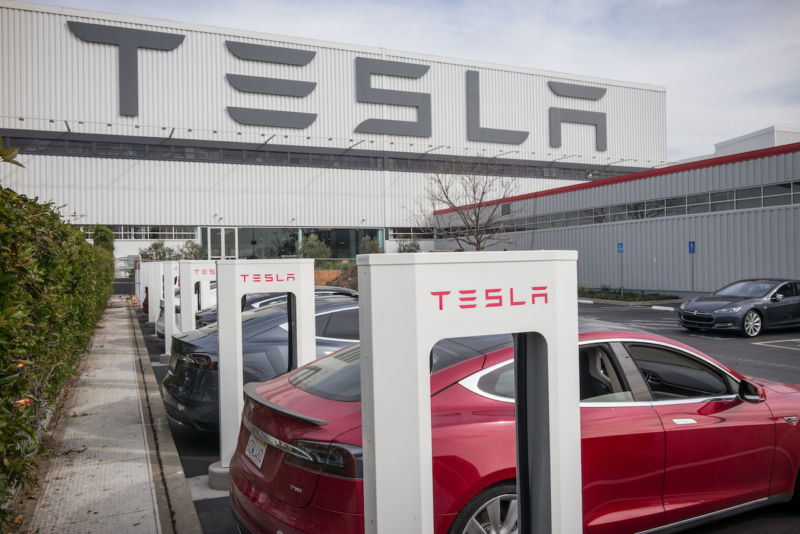Elon Musk is notorious for blowing deadlines. But he eventually gets it right.
“Tesla employees say to expect more Model 3 delays,” read a headline from CNBC yesterday. CNBC’s Lora Kolodny reported that despite Tesla’s ambitions to run a highly automated manufacturing process, Tesla has been being forced to perform some battery-assembly steps in its Nevada Gigafactory by hand, borrowing scores of employees from its battery partner, Panasonic, to do it.
It sounds like a big headache for the Palo Alto carmaker until you notice one key detail: the article is talking about the state of Tesla’s manufacturing operation “as recently as mid-December.”
In December, Tesla and Panasonic workers were manually assembling bandoliers, rows of lithium-ion cells glued on either side of a cooling tube. It’s a tricky task to complete by hand, so the manual assembly led to a lot of errors and waste.
But more recently, Kolodny acknowledges, Tesla has begun to ramp up production.
“Once the machines in the factory were able to crank out bandoliers as fast or faster than the manual laborers, Tesla began sending Panasonic workers back to their employer,” Kolodny reports, citing anonymous sources at the factory. “Today, Tesla is winding down manual assembly as much as possible at the Gigafactory.”
In other words, this seems to be a story of Tesla fixing a production bottleneck and ramping up production—even though the headline gives the opposite impression.
To be fair, one engineer told CNBC that a lack of spare capacity leads to frequent shutdowns: “There’s no redundancy, so when one thing goes wrong, everything shuts down.” But automated production with frequent shutdowns is better than manual assembly. And this is presumably a problem Tesla can fix in the coming months.
It’s important to remember the broader context here. Tesla is notorious for setting ambitious deadlines for itself and then failing to hit them.
For example, in 2009, Tesla was planning to ship the Model S in 2011, but the start of production wound up slipping to mid-2012. Tesla then set a goal to produce 5,000 vehicles during that first calendar year, but only managed to produce 3,100.
But Tesla ultimately did figure out how to produce the Model S in significant volume, and the car became Tesla’s biggest success story.
Production of the Model 3 has gotten off to an even slower start than the Model S. The company only managed to produce about 1,800 Model 3s in the third and fourth quarters of 2017. But Tesla has significant financial resources. It can afford a few months’ delay if it’s ultimately able to perfect its production process.
And the CNBC report suggests that Tesla has made significant progress in that direction over the last month. Production processes that had been performed manually in December are becoming increasingly automated.
Tesla still has a long way to go to manufacture the 400,000 Model 3’s that customers have already ordered—not to mention making them cheaply enough to turn a profit. But Elon Musk has no shortage of persistence and determination. We’re not going to count him out yet.

